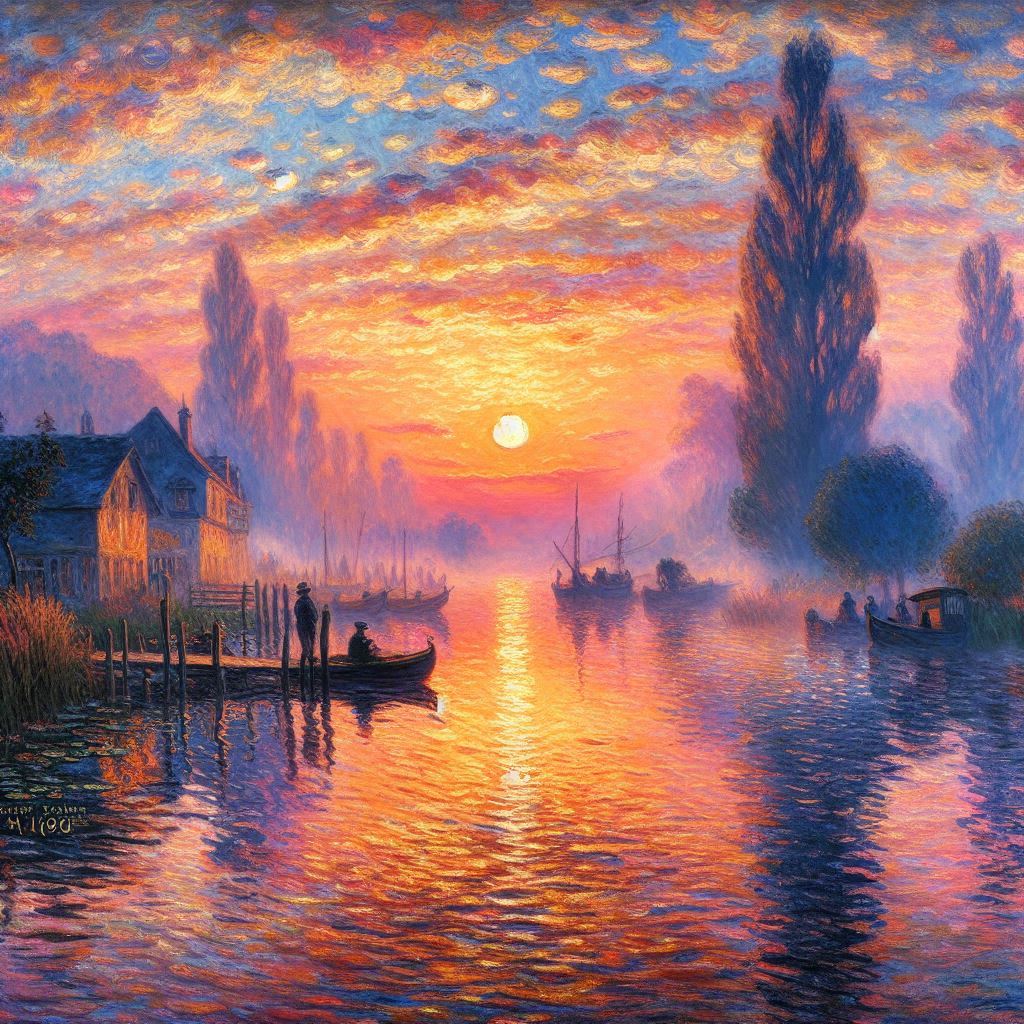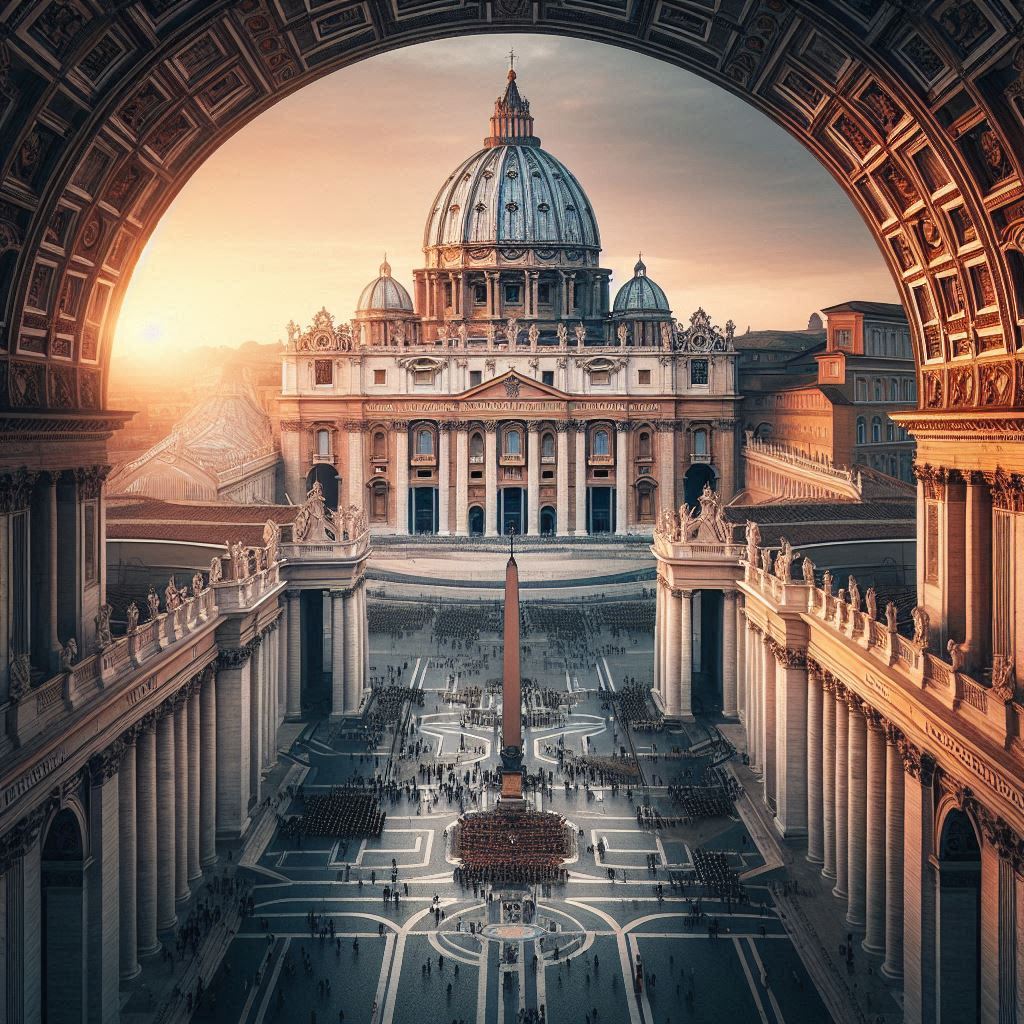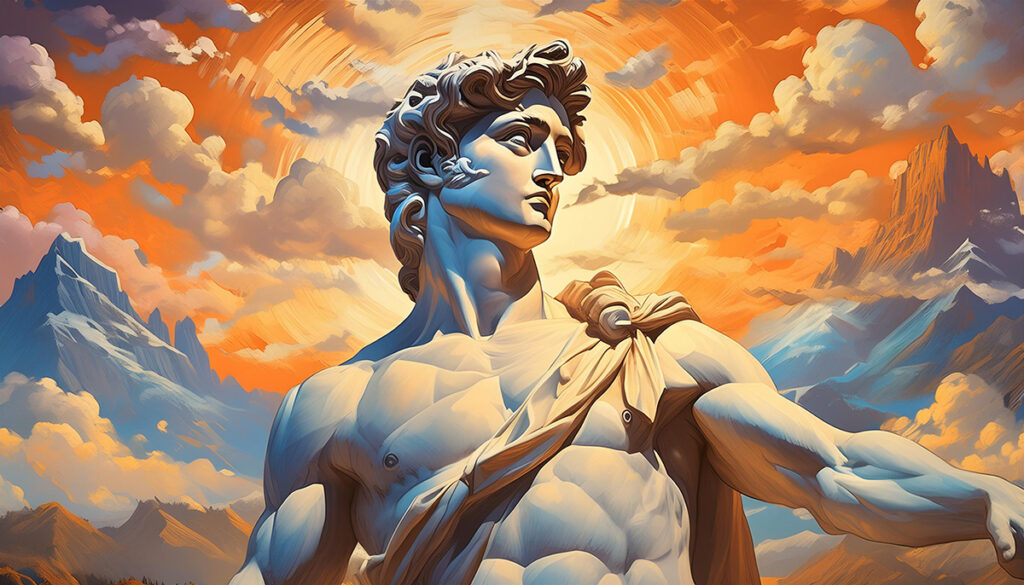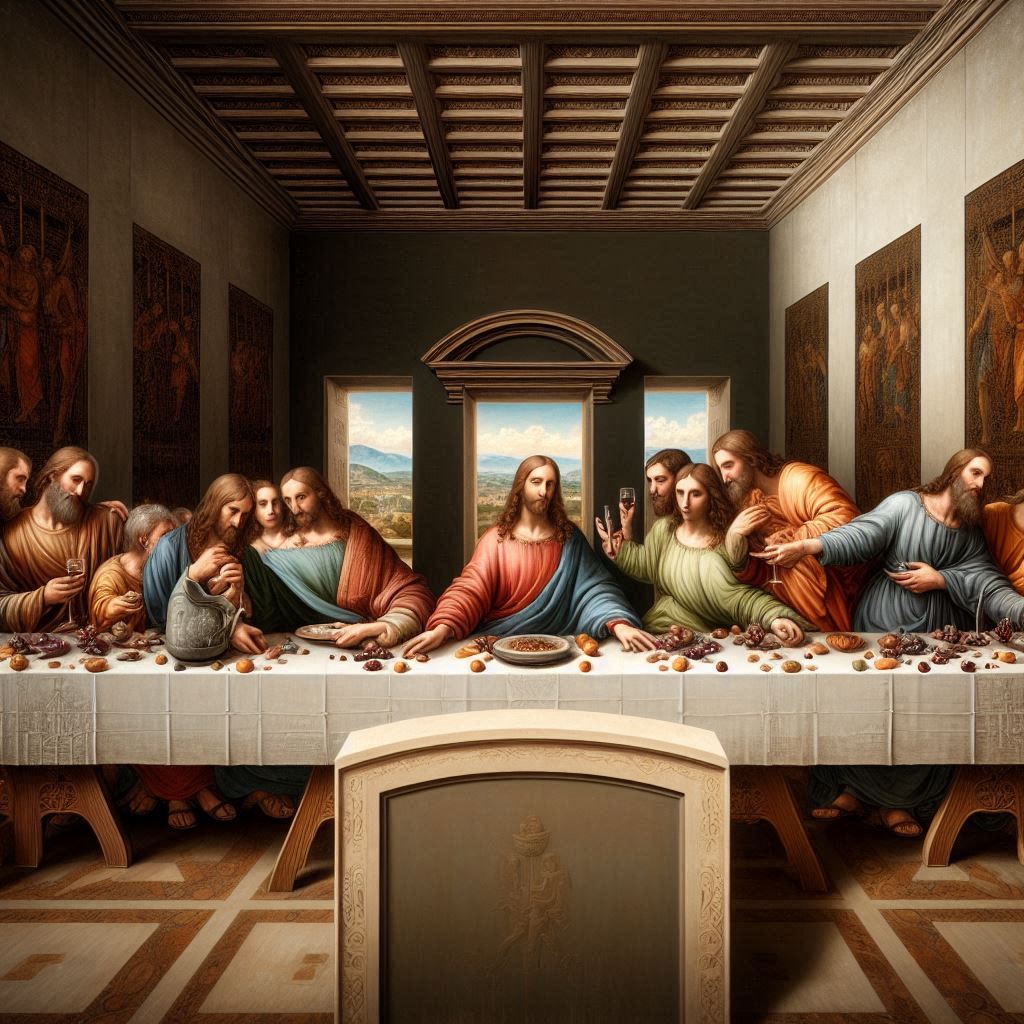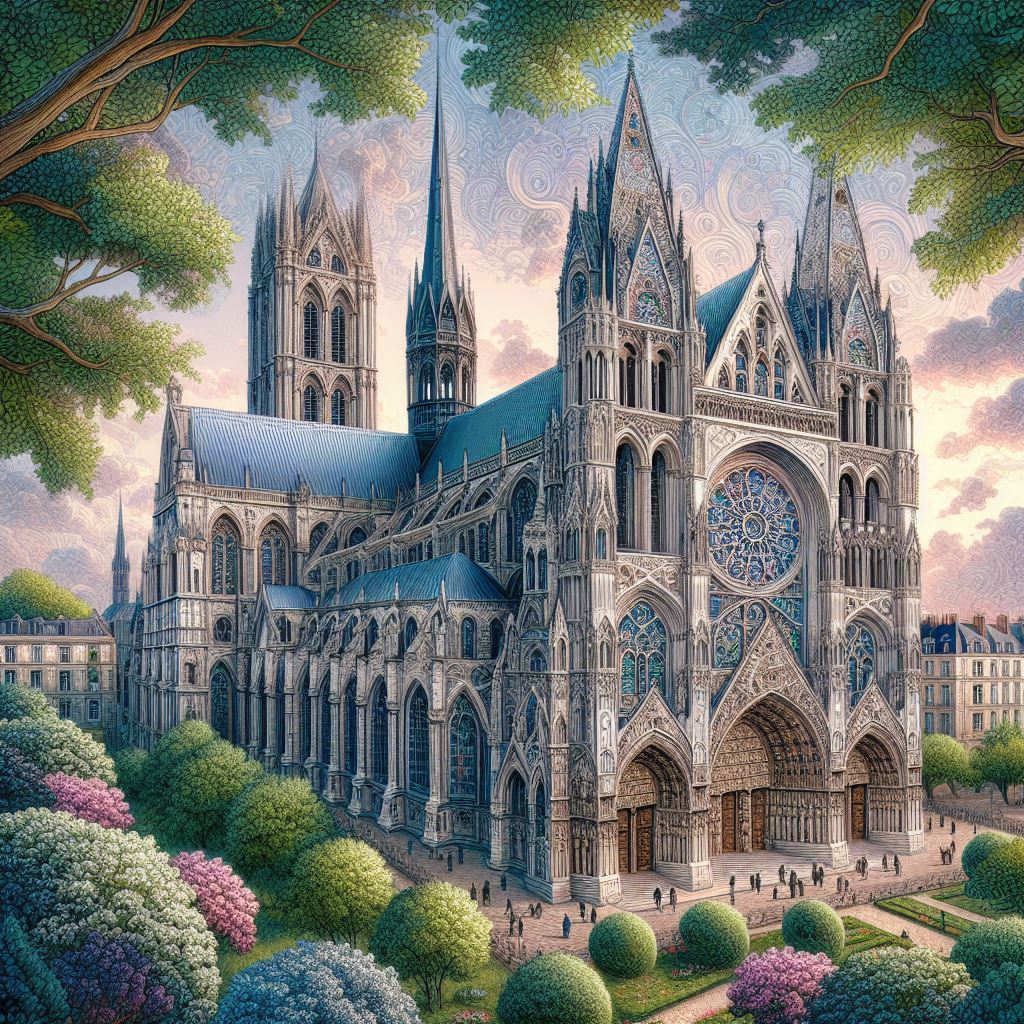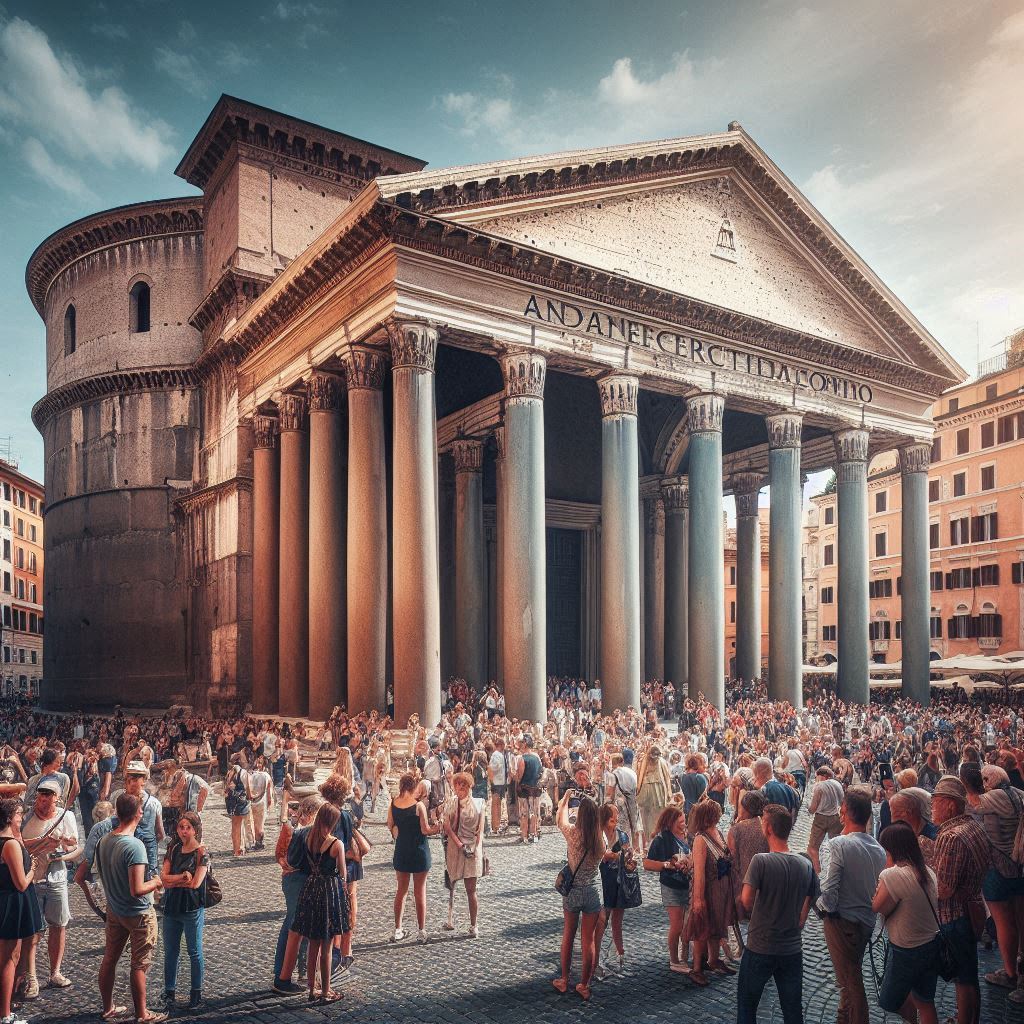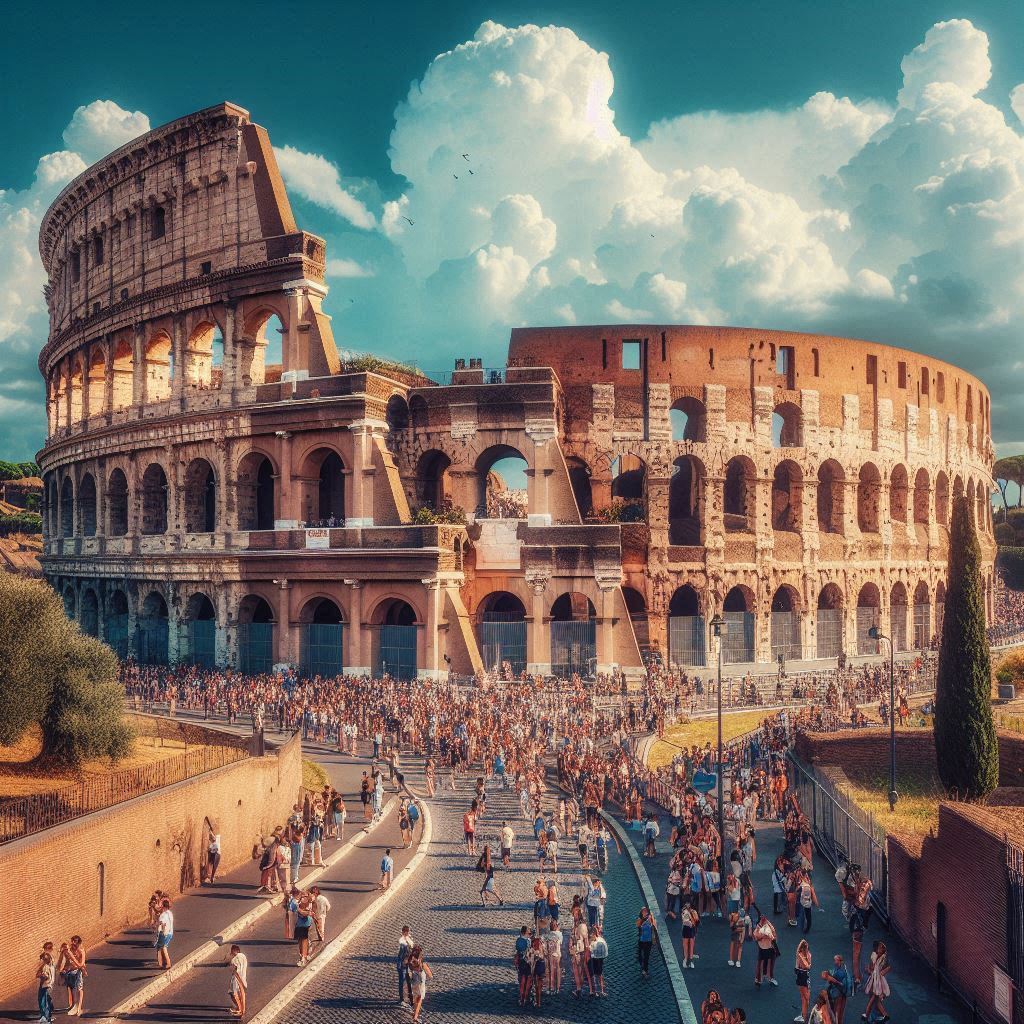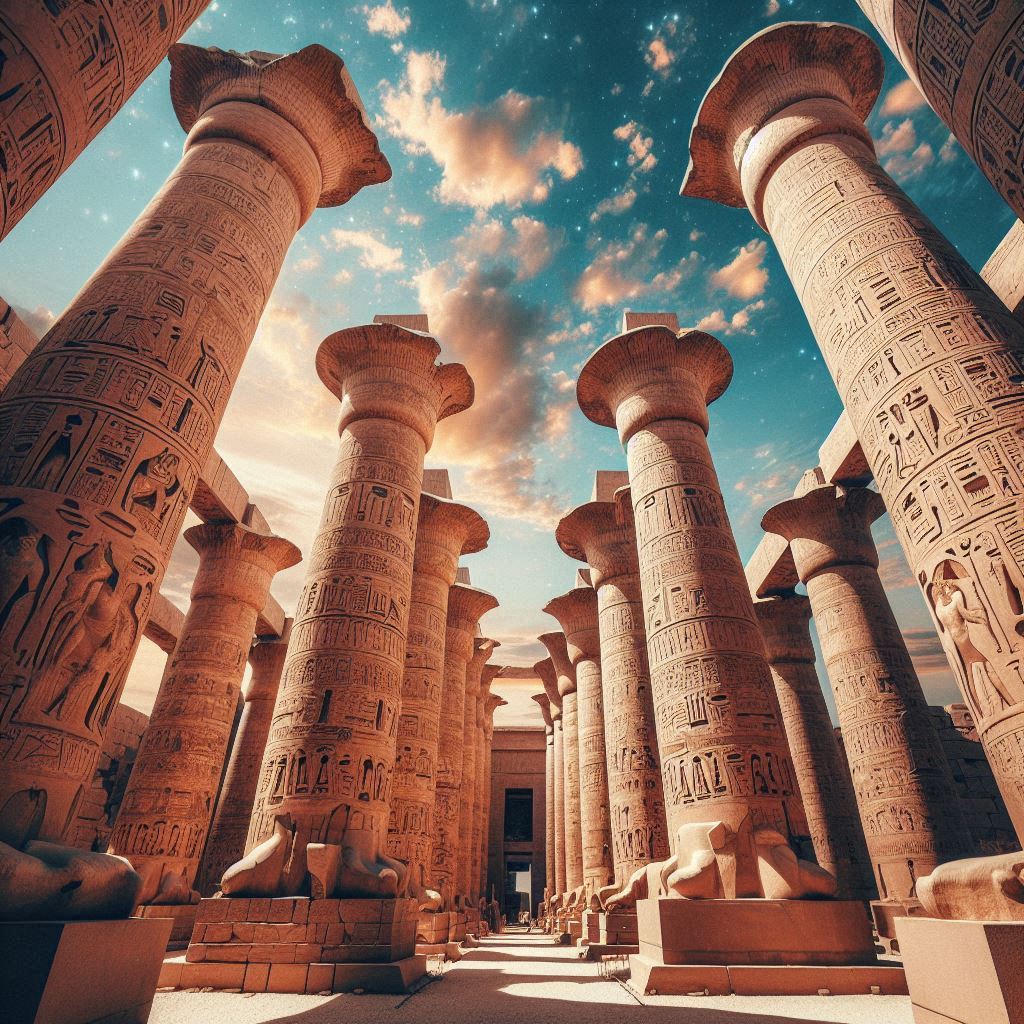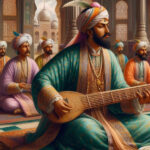The history of art is a rich tapestry of creativity and expression, woven through the centuries by countless artists. This journey spans from the ancient cave paintings to the contemporary art of today, each era marked by its unique styles, techniques, and iconic masterpieces. Here, we explore some of the most influential periods in art history and highlight notable paintings and artists that have left an indelible mark on the world.
Prehistoric Art
Cave Paintings (circa 40,000 – 10,000 BC):
Lascaux Caves (France): The Lascaux cave paintings, discovered in 1940, feature remarkable depictions of animals, human figures, and abstract signs. These paintings are considered some of the earliest examples of human artistic expression.
Ancient Art
Egyptian Art (circa 3000 – 30 BC):
Greek and Roman Art (circa 800 BC – 400 AD):
Medieval Art
Byzantine Art (circa 330 – 1453 AD):
Gothic Art (circa 12th – 16th century):
Renaissance Art
Italian Renaissance (14th – 17th century):
Baroque Art
Baroque (17th century):
Rococo and Neoclassicism
Rococo (18th century):
Neoclassicism (late 18th – early 19th century):
Romanticism (late 18th – mid-19th century):
Impressionism and Post-Impressionism
Impressionism (late 19th century):
Prehistoric Art
Prehistoric art represents the earliest form of human creativity and expression, dating back to the time before written records. These artworks, created by ancient human societies, provide valuable insights into their daily lives, beliefs, and environments. Prehistoric art can be broadly categorized into three main types: cave paintings, petroglyphs, and portable art objects.
Cave Paintings (circa 40,000 – 10,000 BC):
Lascaux Caves (France): Cave paintings are some of the most well-preserved and remarkable examples of prehistoric art. These paintings were created on the walls and ceilings of caves, primarily during the Upper Paleolithic period (around 40,000 to 10,000 BC). The Lascaux cave paintings, discovered in 1940, feature remarkable depictions of animals, human figures, and abstract signs. These paintings are considered some of the earliest examples of human artistic expression.
Altamira Cave (Spain):
The cave paintings of Altamira, discovered in the late 19th century, feature vivid images of bison, wild boars, and other animals. The artists used the contours of the cave walls to give a three-dimensional effect to their work.
Chauvet Cave (France):
Chauvet Cave, discovered in 1994, contains some of the oldest known cave paintings, dating back to around 30,000 BC. The paintings include detailed images of lions, rhinoceroses, and other animals, showcasing the early humans’ keen observation skills and artistic abilities.
Petroglyphs. Petroglyphs are images or symbols carved or engraved into rock surfaces. These carvings date back to various prehistoric periods and can be found all over the world.
Valley of Fire (USA):
The Valley of Fire in Nevada is home to numerous petroglyphs created by Native American tribes thousands of years ago. These carvings depict animals, human figures, and abstract patterns.
Bhimbetka Rock Shelters (India):
The Bhimbetka rock shelters in India contain petroglyphs and paintings that date back to the Mesolithic period (around 10,000 BC). The artworks depict scenes of hunting, dancing, and communal activities.
Twyfelfontein (Namibia):
Twyfelfontein, a UNESCO World Heritage site in Namibia, features thousands of petroglyphs created by the indigenous San people. These carvings, which date back to around 6,000 years ago, include images of animals, humans, and geometric designs.
Portable Art Objects
Portable art objects refer to small, movable pieces of art created by prehistoric people. These objects often served as personal ornaments, tools, or symbolic artifacts.
Venus Figurines:
Venus figurines are small statuettes of female figures, typically with exaggerated features. These figurines, such as the “Venus of Willendorf” (circa 28,000 – 25,000 BC), are thought to represent fertility and motherhood.
Lion Man of Hohlenstein-Stadel (Germany):
This ivory figurine, dating back to around 40,000 years ago, depicts a human body with a lion’s head. It is one of the oldest known examples of figurative art and suggests early humans had complex symbolic and mythological beliefs.
Antler and Bone Carvings:
Prehistoric people also created intricate carvings on antlers, bones, and other materials. These carvings often depicted animals and were likely used as tools, ornaments, or ritual objects.
Ancient Art
Egyptian Art (circa 3000 – 30 BC):
Egyptian art, spanning over three millennia from around 3100 BC to the conquest by Alexander the Great in 332 BC, is one of the most enduring and recognizable styles in the history of art. Characterized by its highly stylized and symbolic nature, Egyptian art served both functional and aesthetic purposes, deeply intertwined with the culture’s religious beliefs and practices.
The Bust of Nefertiti: This iconic sculpture of Queen Nefertiti, created by the artist Thutmose, exemplifies the high level of craftsmanship in ancient Egypt.
The Great Pyramids and the Sphinx:
The pyramids of Giza, built during the Fourth Dynasty (circa 2580–2560 BC), are among the most iconic symbols of ancient Egypt. These monumental structures served as tombs for pharaohs and were designed to protect and honor them in the afterlife. The Great Sphinx, with the body of a lion and the head of a pharaoh (believed to be Khafre), stands as a guardian of these sacred sites.
The Temples of Karnak and Luxor:
These massive temple complexes, located in Thebes (modern-day Luxor), are dedicated to the god Amun and other deities. The temples feature colossal statues, obelisks, and intricately decorated walls with hieroglyphs and reliefs depicting pharaohs and gods.
Tomb of Tutankhamun:
Discovered in 1922 by Howard Carter, the tomb of Tutankhamun (King Tut) is famous for its wealth of treasures, including the pharaoh’s iconic gold funerary mask. The artifacts provide valuable insights into the art and culture of the 18th Dynasty.
The Rosetta Stone:
This granodiorite stele, dating to 196 BC, features inscriptions in three scripts: Greek, Demotic, and Hieroglyphic. The Rosetta Stone was crucial in deciphering Egyptian hieroglyphs, unlocking the language and literature of ancient Egypt.
Egyptian artists used a variety of materials, including limestone, sandstone, granite, gold, and faience (glazed ceramic). Hieroglyphic writing was integral to Egyptian art. These pictorial symbols were used to record important information, tell stories, and convey religious texts.
Greek and Roman Art (circa 800 BC – 400 AD):
Greek Art
Periods of Greek Art:
Geometric Period (900-700 BC):
Dipylon Vase: Large funerary vases from this period, like the Dipylon Vase, are decorated with intricate geometric patterns and scenes of funerals.
Archaic Period (700-480 BC):
Kouros and Kore Statues: These freestanding sculptures of young men (kouroi) and women (korai) exhibit stylized features and the “Archaic smile.”
Black-Figure and Red-Figure Pottery: Pottery from this period includes scenes from mythology and everyday life, with black-figure technique preceding the more detailed red-figure technique.
Classical Period (480-323 BC):
The Parthenon: The Parthenon on the Acropolis of Athens, built under the leadership of Pericles, exemplifies Classical architecture. The temple is dedicated to Athena and features sculptural decorations by Phidias.
Sculptures by Phidias, Polykleitos, and Praxiteles: Notable works include the statue of Zeus at Olympia (Phidias), the Doryphoros (Polykleitos), and the Aphrodite of Knidos (Praxiteles), showcasing idealized human forms and balanced proportions.
Hellenistic Period (323-31 BC):
Laocoön and His Sons: This sculpture group, depicting a scene from the Trojan War, is renowned for its dramatic expression and complex composition.
Venus de Milo: This statue of Aphrodite (Venus) represents the heightened naturalism and sensuality of Hellenistic art.
Roman Art
Periods of Roman Art:
Republican Period (509-27 BC):
Roman Portraiture: Busts from this period, such as the “Head of a Roman Patrician,” are characterized by their realistic and individualized features, reflecting the Roman value of verism.
Imperial Period (27 BC-476 AD):
Augustus of Prima Porta: This statue of the first Roman emperor combines idealized features with political propaganda, depicting Augustus as a youthful and divine leader.
The Colosseum: Also known as the Flavian Amphitheatre, the Colosseum is an iconic example of Roman engineering and architecture, used for gladiatorial games and public spectacles.
The Pantheon: This temple, with its massive dome and oculus, is a marvel of Roman engineering and architectural design. It was originally built to honor all the gods of ancient Rome.
Ara Pacis Augustae: The Altar of Augustan Peace, richly decorated with relief sculptures, celebrates the peace and prosperity brought by Augustus’ reign.
Roman Mosaics and Frescoes:
Pompeii and Herculaneum: The preserved cities of Pompeii and Herculaneum provide a wealth of information about Roman domestic art, including detailed frescoes and intricate mosaics depicting mythological scenes, landscapes, and daily life.
Roman Art:
Realism: Roman art is noted for its realism, particularly in portraiture, which often depicts individuals with detailed and unflattering accuracy.
Adaptation and Innovation: Romans borrowed heavily from Greek art but also innovated, particularly in architecture with the development of the arch, vault, and concrete construction.
Political Propaganda: Art was used as a tool for political propaganda, celebrating military victories, emperors, and the Roman state.
Major Artworks and Monuments
- Sculpture:
Augustus of Prima Porta: A marble statue of Emperor Augustus, depicting him as an idealized and god-like figure. The statue is a masterful blend of realism and idealism, conveying both his authority and divine status.
Equestrian Statue of Marcus Aurelius: This bronze statue of Emperor Marcus Aurelius on horseback is celebrated for its detailed and naturalistic portrayal, emphasizing the emperor’s calm authority and leadership.
Portrait Busts: Roman portrait busts, such as those of patricians and emperors, are known for their detailed realism, capturing individual features and expressions with remarkable accuracy.
- Architecture:
The Colosseum (Flavian Amphitheatre): This massive amphitheater in Rome, built between AD 70-80, is an architectural marvel. It could hold up to 80,000 spectators and was used for gladiatorial contests, public spectacles, and entertainment.
The Pantheon: Originally built by Marcus Agrippa and later rebuilt by Emperor Hadrian around AD 126, the Pantheon is renowned for its large dome and oculus, representing a pinnacle of Roman engineering and architectural design.
Roman Aqueducts: Structures like the Pont du Gard in France exemplify Roman engineering prowess, transporting water over long distances through a system of arches and channels.
- Frescoes and Mosaics:
Pompeii and Herculaneum: The eruption of Mount Vesuvius in AD 79 preserved these cities, providing a wealth of information about Roman frescoes and mosaics. These artworks depict scenes from mythology, landscapes, and daily life, using vibrant colors and intricate designs.
Villa of the Mysteries: Located in Pompeii, this villa is famous for its well-preserved frescoes depicting the initiation rites of the Dionysian Mysteries, showcasing the use of art in private religious practices.
- Relief Sculpture:
Ara Pacis Augustae (Altar of Augustan Peace): Commissioned by the Roman Senate in 13 BC to honor the return of Augustus, this altar is adorned with detailed reliefs celebrating peace and prosperity brought by his reign.
Column of Trajan: Erected in AD 113, this monumental column features a spiraling relief that narrates Emperor Trajan’s victory in the Dacian Wars, providing a detailed visual account of historical events.
Medieval Art
Medieval art, spanning roughly from the fall of the Western Roman Empire in the 5th century to the dawn of the Renaissance in the 14th century, encompasses a diverse array of styles and periods, reflecting the varied cultures and societies of Europe during the Middle Ages.
Major Artworks and Monuments
- Early Medieval Art (circa 500-1000):
The Book of Kells: An illuminated manuscript of the four Gospels, created by Celtic monks around the 9th century. It is renowned for its intricate designs, vibrant colors, and detailed illustrations.
Sutton Hoo Treasures: Artifacts from a 7th-century Anglo-Saxon ship burial, including a helmet, shield, and exquisite metalwork, reflecting the blend of pagan and Christian elements.
- Romanesque Art (circa 1000-1200):
Saint-Sernin Basilica, Toulouse: A prime example of Romanesque architecture, featuring rounded arches, massive walls, and barrel vaults. Its sculptures and reliefs depict biblical scenes and saints.
Bayeux Tapestry: An embroidered cloth depicting the events leading up to the Norman Conquest of England in 1066. It is notable for its narrative detail and historical significance.
- Gothic Art (circa 1200-1400):
Chartres Cathedral: A masterpiece of Gothic architecture, known for its soaring spires, flying buttresses, and stunning stained glass windows depicting biblical stories and saints.
The Wilton Diptych: A portable altarpiece created in England around 1395-1399, notable for its use of gold leaf and delicate detail, depicting King Richard II being presented to the Virgin Mary and Child by saints.
- Byzantine Art (circa 500-1453):
Hagia Sophia, Constantinople: Initially built as a cathedral, it is famous for its massive dome, rich mosaics, and architectural innovation. It exemplifies the grandeur of Byzantine art and architecture.
Icon of Christ Pantocrator: An iconic representation of Christ, emphasizing his divine nature, often found in Byzantine churches and monasteries. Icons were central to Byzantine religious practice.
Renaissance Art
Renaissance art, spanning roughly from the 14th to the 17th century, marked a profound transformation in European art, culture, and intellectual life. Originating in Italy and later spreading across Europe, the Renaissance was characterized by a revival of interest in classical antiquity, humanism, and the pursuit of realism and scientific accuracy in art. This period produced some of the most renowned and influential artworks and artists in history. Here’s an exploration of key aspects, artworks, and the significance of Renaissance art.
Major Artworks and Artists
- Early Renaissance (14th to 15th century):
Giotto di Bondone (1267-1337): Known for his frescoes in the Scrovegni Chapel in Padua, Giotto’s work marked a departure from the stylized forms of medieval art, introducing more naturalistic figures and expressions.
Masaccio (1401-1428): His frescoes in the Brancacci Chapel, such as “The Tribute Money,” are celebrated for their use of perspective and realistic human figures.
Donatello (1386-1466): A master sculptor, Donatello’s works like the bronze “David” and “Gattamelata” are noted for their lifelike detail and expression.
- High Renaissance (late 15th to early 16th century):
Leonardo da Vinci (1452-1519): Renowned for his mastery across multiple disciplines, Leonardo’s masterpieces include “The Last Supper” and “Mona Lisa,” exemplifying his innovative use of perspective, anatomy, and sfumato.
Michelangelo Buonarroti (1475-1564): A sculptor, painter, and architect, Michelangelo’s iconic works include the marble “David,” the Sistine Chapel ceiling frescoes, and the “Pietà.”
Raphael (1483-1520): Known for his harmonious compositions and clarity, Raphael’s famous works include “The School of Athens” and numerous Madonna and Child paintings.
- Northern Renaissance:
Jan van Eyck (1390-1441): A pioneer of oil painting, van Eyck’s “Arnolfini Portrait” is noted for its intricate detail and use of light and texture.
Albrecht Dürer (1471-1528): A German painter, printmaker, and theorist, Dürer’s works like “The Four Horsemen of the Apocalypse” and “Melencolia I” showcase his technical skill and intellectual depth.
Hieronymus Bosch (1450-1516): Known for his imaginative and often surreal imagery, Bosch’s “The Garden of Earthly Delights” presents a detailed and complex vision of heaven, earth, and hell.
Baroque Art
Baroque art, which flourished in Europe from the late 16th century to the early 18th century, is characterized by its dramatic, emotional, and theatrical qualities. This artistic movement emerged in response to the Protestant Reformation and was heavily influenced by the Catholic Church’s Counter-Reformation, which sought to use art as a means of inspiring faith and conveying religious themes with intensity and grandeur. Baroque art encompasses painting, sculpture, architecture, and music, each marked by a sense of movement, contrast, and emotional exuberance. Here’s an exploration of key aspects, artworks, and the significance of Baroque art.
Major Artworks and Artists
- Caravaggio (1571-1610):
“The Calling of St. Matthew” (1599-1600): Known for his use of chiaroscuro, Caravaggio’s painting depicts the moment Jesus calls Matthew to be his disciple, with a dramatic play of light highlighting the figures.
“Judith Beheading Holofernes” (1598-1599): This intense and violent scene is rendered with stark realism and dramatic lighting, emphasizing the emotional and physical struggle.
- Peter Paul Rubens (1577-1640):
“The Elevation of the Cross” (1610-1611): A dynamic and powerful triptych, showcasing Rubens’ mastery in depicting muscular figures in dramatic poses.
“The Arrival of Marie de’ Medici at Marseilles” (1622-1625): Part of a series celebrating the life of Marie de’ Medici, this painting is marked by its vibrant colors, fluid movement, and theatrical composition.
- Rembrandt van Rijn (1606-1669):
“The Night Watch” (1642): A masterful group portrait that uses light and shadow to create a sense of depth and action, highlighting individual characters within the larger composition.
“The Anatomy Lesson of Dr. Nicolaes Tulp” (1632): A powerful depiction of a medical dissection, showcasing Rembrandt’s ability to capture realism and drama.
- Gian Lorenzo Bernini (1598-1680):
“Ecstasy of Saint Teresa” (1647-1652): A stunning marble sculpture in the Cornaro Chapel, Rome, capturing the intense spiritual experience of Saint Teresa with a remarkable sense of movement and emotion.
“David” (1623-1624): Unlike the calm, static depictions of David by earlier artists, Bernini’s sculpture shows David in mid-action, ready to launch his stone at Goliath, emphasizing dynamism and tension.
- Diego Velázquez (1599-1660):
“Las Meninas” (1656): A complex and enigmatic painting, offering a glimpse into the Spanish royal court. Velázquez’s use of perspective, light, and the positioning of figures create a layered and intriguing composition.
“The Surrender of Breda” (1634-1635): A historical painting that captures the dignified exchange between Spanish and Dutch leaders, emphasizing both realism and the grandeur of the event.
- Artemisia Gentileschi (1593-1656):
“Judith Slaying Holofernes” (1614-1620): Known for its dramatic intensity and emotional power, this painting by one of the few renowned female Baroque artists presents a powerful and vivid interpretation of the biblical story.
Architectural Highlights
St. Peter’s Basilica (Vatican City):
The Baroque renovation of St. Peter’s Basilica, including Bernini’s colonnade and the Baldachin over the main altar, exemplifies the grandeur and dramatic style of Baroque architecture.
Versailles Palace (France):
The expansion of Versailles under Louis XIV, particularly the Hall of Mirrors, showcases the opulence and elaborate decoration characteristic of Baroque architecture.
Sant’Andrea al Quirinale (Rome):
Designed by Bernini, this church features a dynamic, oval plan and richly decorated interior, emphasizing the dramatic and theatrical qualities of Baroque architecture.
Rococo Art
Rococo art, emerging in early 18th-century France, is characterized by its ornate, playful, and whimsical qualities. This artistic movement flourished under the reign of Louis XV and Louis XVI, reflecting the elegance and hedonism of the French aristocracy. Rococo art is known for its lightness, asymmetry, and elaborate ornamentation, offering a stark contrast to the grandeur and seriousness of Baroque art.
Major Artworks and Artists
- Jean-Antoine Watteau (1684-1721):
“Pilgrimage to Cythera” (1717): This painting depicts an elegant and idyllic scene of lovers journeying to the mythical island of Cythera, showcasing Watteau’s skill in capturing light and movement.
“The Embarkation for Cythera” (1718): Another version of the Cythera theme, it portrays the same romantic and dreamlike atmosphere.
- François Boucher (1703-1770):
“The Toilet of Venus” (1751): A sensuous and decorative portrayal of Venus attended by cherubs, exemplifying Boucher’s mastery of Rococo elegance and charm.
“Madame de Pompadour” (1756): A portrait of King Louis XV’s influential mistress, illustrating the luxurious lifestyle and refined taste of the period.
- Jean-Honoré Fragonard (1732-1806):
“The Swing” (1767): One of the most iconic Rococo paintings, it captures a playful and flirtatious moment with a young woman on a swing, attended by her lover and a voyeuristic older man.
“The Progress of Love” series (1771-1773): A series of paintings depicting various stages of romantic love, commissioned by Madame du Barry, the last mistress of Louis XV.
- Giovanni Battista Tiepolo (1696-1770):
“The Apotheosis of the Spanish Monarchy” (1762-1766): A ceiling fresco in the Royal Palace of Madrid, exemplifying Tiepolo’s skill in creating dramatic, light-filled compositions.
Architectural Highlights
Amalienburg (Munich, Germany):
This hunting lodge in the Nymphenburg Palace Park is a prime example of Rococo architecture, featuring lavish interiors with ornate stuccowork and mirrored walls.
Catherine Palace (St. Petersburg, Russia):
The Rococo-style interiors, particularly the famous Amber Room, showcase elaborate decoration and luxurious materials.
Würzburg Residence (Germany):
The grand staircase and the ceiling fresco by Tiepolo are notable for their Rococo elegance and sophistication.
Neoclassicism
Neoclassicism, a dominant movement in the arts from the mid-18th to the early 19th century, arose as a reaction against the ornate Rococo style and sought to revive the ideals of classical antiquity. This movement was deeply intertwined with the Enlightenment, emphasizing reason, order, and moral virtue. Neoclassicism drew inspiration from the art and culture of ancient Greece and Rome, promoting simplicity, symmetry, and a sense of grandeur.
Major Artworks and Artists
- Jacques-Louis David (1748-1825):
“The Oath of the Horatii” (1784): A seminal work of Neoclassicism, depicting a scene from Roman history with strong lines, clear composition, and a powerful moral message about duty and sacrifice.
“The Death of Socrates” (1787): Illustrates the stoic and noble death of Socrates, emphasizing reason, virtue, and calm dignity.
- Jean-Auguste-Dominique Ingres (1780-1867):
“Grande Odalisque” (1814): While retaining some Rococo sensuality, this painting showcases Ingres’ classical style with its clear lines and idealized form.
“The Apotheosis of Homer” (1827): Celebrates the literary genius of Homer, depicted in a manner reminiscent of classical sculpture and architecture.
- Antonio Canova (1757-1822):
“Psyche Revived by Cupid’s Kiss” (1787-1793): A marble sculpture embodying Neoclassical ideals of beauty, grace, and emotional restraint.
“Perseus with the Head of Medusa” (1804-1806): An idealized representation of the mythological hero, reflecting Canova’s mastery of classical form and composition.
- Angelica Kauffman (1741-1807):
“Cornelia, Mother of the Gracchi” (1785): A painting illustrating the virtue of Cornelia, emphasizing the moral and educational themes of Neoclassicism.
Architectural Highlights
The Panthéon (Paris, France):
Originally built as a church, this Neoclassical building exemplifies the style’s emphasis on grandeur, symmetry, and classical elements like columns and pediments.
Monticello (Virginia, USA):
The home of Thomas Jefferson, designed by Jefferson himself, reflects Neoclassical principles in its symmetry, use of columns, and adherence to classical proportions.
The British Museum (London, England):
Featuring a grand facade with classical columns and a pediment, the museum embodies the Neoclassical emphasis on order and dignity.
Romanticism
Romanticism was an artistic, literary, and intellectual movement that originated in Europe toward the end of the 18th century and peaked in the first half of the 19th century. It was a reaction against the rationalism and restraint of Neoclassicism and the Enlightenment, emphasizing emotion, imagination, spontaneity, and a deep connection with nature and the past. Romanticism encompassed a wide range of artistic disciplines, including literature, music, painting, and sculpture, each expressing a fascination with the sublime, the mysterious, and the exotic.
Major Artworks and Artists
- Caspar David Friedrich (1774-1840):
“Wanderer above the Sea of Fog” (1818): A quintessential Romantic landscape painting depicting a figure standing on a rocky precipice, gazing into a misty abyss, symbolizing the individual’s contemplation of the vastness of nature and the sublime.
- Eugène Delacroix (1798-1863):
“Liberty Leading the People” (1830): An iconic painting depicting the allegorical figure of Liberty leading the French people during the July Revolution of 1830, showcasing Delacroix’s use of vibrant colors, dynamic composition, and emotive expression.
- Francisco Goya (1746-1828):
“The Third of May 1808” (1814): A powerful depiction of the Spanish resistance to Napoleon’s troops, capturing the brutal repression and human suffering with stark realism and emotional intensity.
- J.M.W. Turner (1775-1851):
“The Slave Ship” (1840): A painting depicting a ship caught in a storm, with slaves thrown overboard, illustrating Turner’s exploration of themes such as human suffering, nature’s power, and the moral implications of slavery.
Impressionism
Impressionism was a revolutionary art movement that emerged in France in the late 19th century, challenging traditional approaches to painting and marking a significant departure from academic conventions. It is characterized by its emphasis on capturing the fleeting effects of light and atmosphere, spontaneity, and the portrayal of everyday scenes with a fresh, observational approach.
Major Artists and Works
- Claude Monet (1840-1926):
“Impression, Sunrise” (1872): This painting, which gave the Impressionist movement its name, depicts the port of Le Havre at sunrise with loose brushwork and a focus on capturing the effects of light on water and atmosphere.
- Pierre-Auguste Renoir (1841-1919):
“Luncheon of the Boating Party” (1881): A lively and colorful depiction of a group of friends enjoying a leisurely lunch on a balcony, showcasing Renoir’s skill in capturing human warmth and spontaneity.
- Edgar Degas (1834-1917):
“The Ballet Class” (1874): Degas frequently painted scenes from the ballet, capturing dancers in motion and exploring themes of movement, light, and the human form.
- Berthe Morisot (1841-1895):
“Summer’s Day” (1879): A painting that exemplifies Morisot’s delicate brushwork and focus on intimate, domestic scenes, often featuring women and children in outdoor settings.
The history of art is a testament to humanity’s boundless creativity and the ever-evolving ways in which we express ourselves. From the ancient cave paintings of Lascaux to the cutting-edge installations of contemporary artists, each era has contributed to a rich legacy of artistic achievement. By exploring the works of these famous paintings and artists, we gain insight into the cultural, social, and political contexts that shaped their creations and continue to influence our world today.
